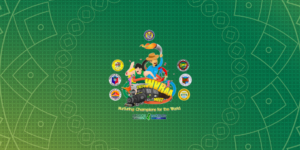
(Part 1 of 2)
Well-respected historian and professor Ambeth Ocampo is calling on fellow historians and academics to reclaim social media as a space for truth after vile descriptives were thrown at him as an aftermath of his response to starlet Ella Cruz’s viral “history is like tsismis” remark.
In an earlier interview, Cruz who plays Irene Marcos-Araneta in the film “Maid in Malacanang” said “History is like tsismis (gossip). It is filtered and dagdag na rin, so hindi natin alam what is the real history. Andoon na iyong idea, pero may mga bias talaga.”
Ocampo countered the statement in a social media post saying “History may have bias but it is based on fact, not opinion. Real history is about truth, not lies, not fiction.”
In a separate post, the historian and columnist wrote: “Respecting your opinion? Falsehood and error are never respected, much less endured, they are called out and corrected.”
I fully agree with Ocampo. One cannot demand that her opinion be respected when her remark was intended to cast doubt on an established aspect of history. In this case, the 1986 EDSA People Power Revolution.
If Ella was a student of mine and she made that statement in my class, I would have called out what was not true in her remark that was said as-a-matter-of-factly, and corrected what was erroneous. Why? It is simply because I would be remiss of my duty as an educator if I will just keep mum and allow falsehood to spread. Worse, falsehood that is not called out and corrected immediately can exponentially spread like a virus. Not speaking up and correcting what is wrong is the same as allowing disinformation to thrive on a platform which obviously is the fastest medium for spreading fake news. When false information is allowed to spread, people’s exposure to waves of fabricated stories will have an effect not only on the political consciousness of people but also on their behavioral intentions.
‘THE MEDIUM IS THE MESSAGE’
Today’s communication ecosystem reminds me of Canadian educator and philosopher Marshall McLuhan’s “the medium is the message” statement which means that media forms and methods used to disseminate information have a significant impact on messages they deliver and eventually, how audiences perceive it. Or simply put, media used in communicating a message will affect the perception of the message that it delivers in some way, or that forms of media that are thought to be very influential on society, including those thought to have changed or to have the potential to change how people experience the world.
One good example would be how discussions take place on Twitter. The limitation on the character count of posts influences how people communicate and perceive messages found on Tweets. Anyone who wants to Tweet has to adhere to the strict word count which may render his or her messages incomplete, lacking in context or its meaning compromised.
McLuhan may not have experienced the Internet the way we know it now, but he foresaw exactly how the Web and new forms of media would impact on communication, culture and society. His theory implies that how people communicate with each other defines who they are and constitutes so much of what makes a culture and an individual unique.
And since social media is the most popular and most frequently used communication platform today, and that fake news spreads up to six times faster than the truth in socmed plus, “reality is shaped by those who can game what the algorithms pick up” according to Ressa, all the more that educators and experts must push back whenever there is a blatant attempt to use socmed for disinformation purposes.* (to be continued)







